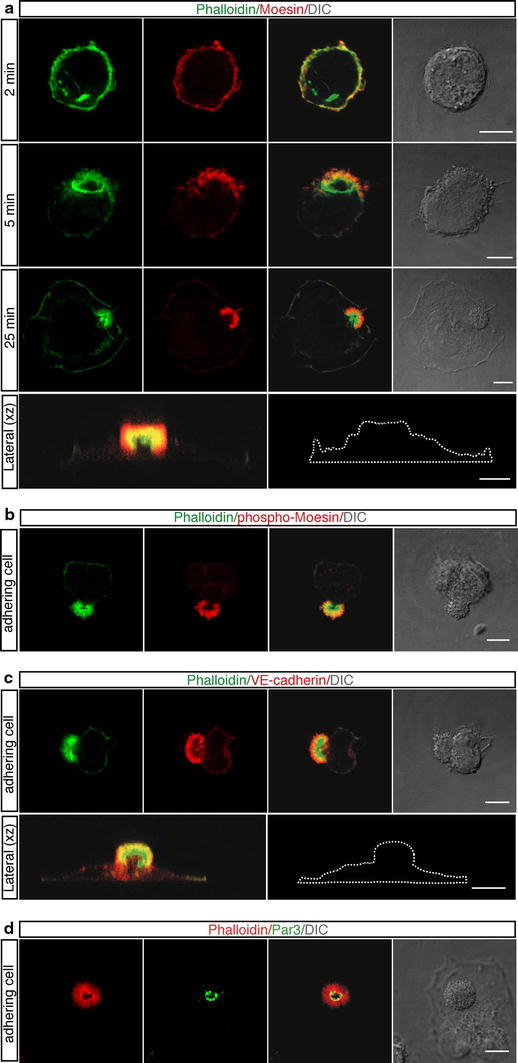Fig. 3.

Following endothelial cell adhesion to ECM, activated Moesin and VE-cadherin redistribute to the apical bud. HUVEC were trypsinized, resuspended in complete medium, plated on vitronectin, and allowed to spread. a At the indicated times after plating cells were fixed and stained with phalloidin (green) and anti-Moesin antibodies (red). Moesin localizes to the apical domain. A vertical section (lateral xz) obtained from periodic z-series acquired at 25 min after plating of a spreading cell is shown. The corresponding cell boundary is indicated by a white dotted line. Scale bars represent 8 μm. b Cells attaching to the substrate were fixed and stained with phalloidin (green) and anti-phospho-Moesin antibodies (red). Activated Moesin localizes to the apical bud. Scale bar is 10 μm. c Spreading cells were fixed and stained with phalloidin (green) and anti-VE-cadherin antibodies (red). VE-cadherin is mainly distributed to the apical domain. Periodic z-series of a spreading cell were acquired at 20 min after plating to generate a lateral view (lateral xz). The corresponding cell boundary is indicated by a white dotted line. Scale bars represent 8μm. d Cells adhering to the substrate were fixed and stained with phalloidin (red) and anti-Par3 antibodies (green). Par3, a component of the Par polarity complex, localizes to the centre of the apical bud. Scale bar is 8 μm. DIC images of stained cells are shown
